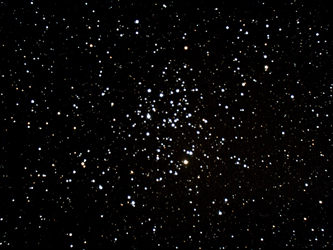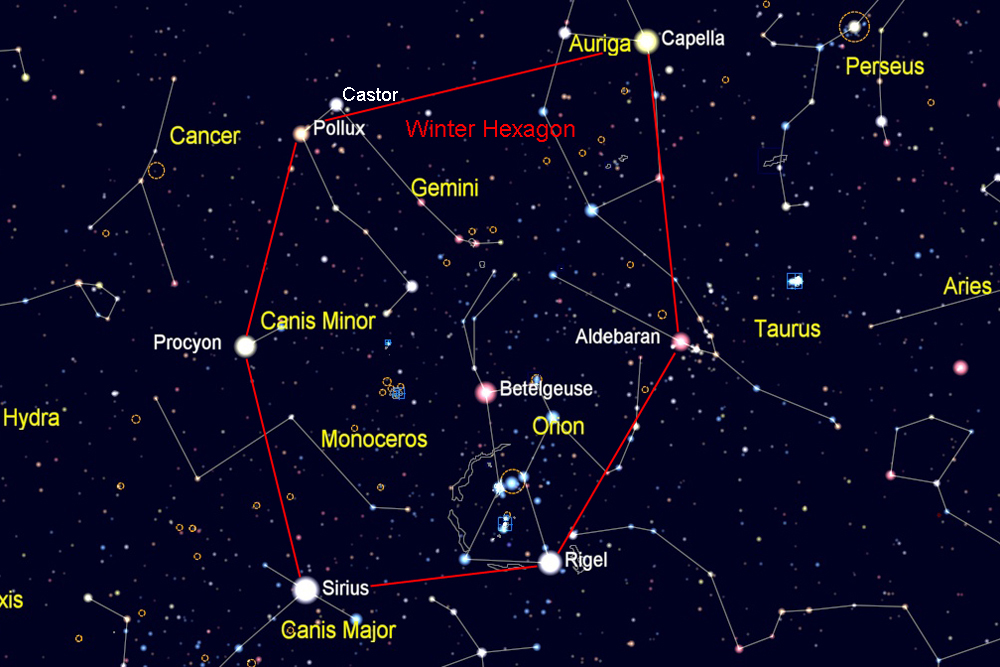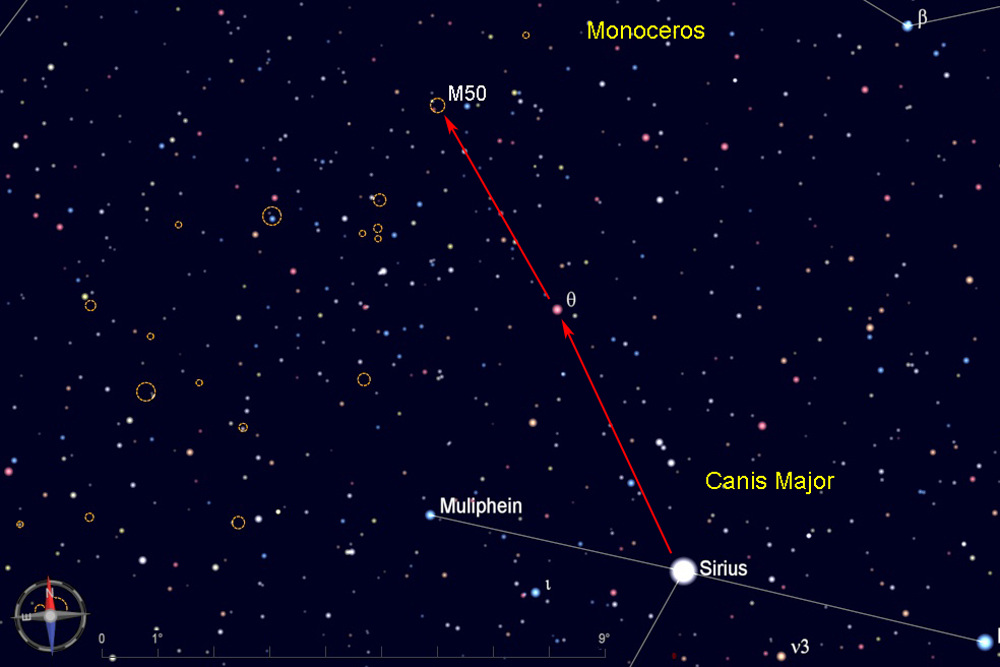
Find the Winter Hexagon, which is composed of six of the brightest stars in the sky--Sirius, Procyon, Pollux, Capella, Aldebaran, and Rigel. On mid-winter evenings, these stars form a large oval stretching from low in the south to nearly overhead. As spring begins, the Winter Hexagon sinks toward the west. The constellation Orion and its bright red star Betelgeuse are inside the Hexagon.
For this star hop, find Sirius, the brightest star in the sky.

Look 5 degrees to the north of brilliant Sirius to find a much dimmer star, 4th magnitude θ Canis Majoris. From θ, follow this same line another 4 or 5 degrees and you will arrive at the location of M50. There are no bright stars in the vicinity, but M50 should be visible in binoculars or a finderscope as a hazy circular patch.
